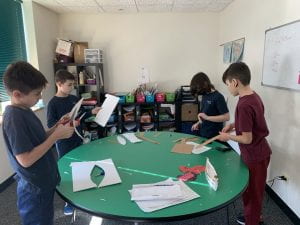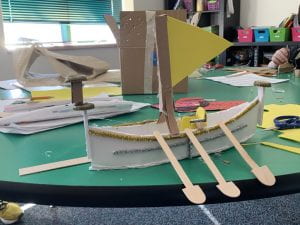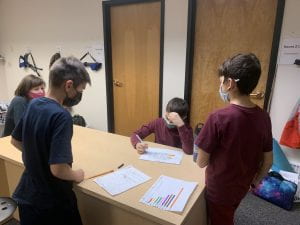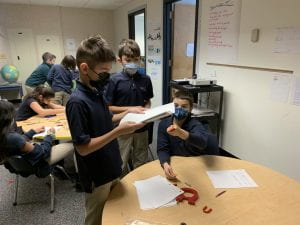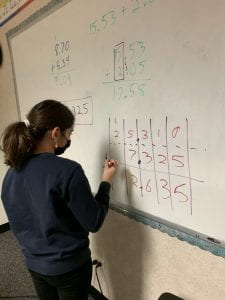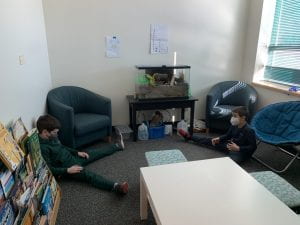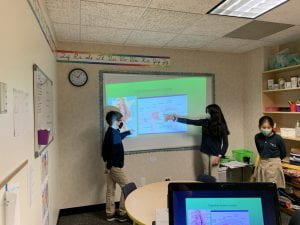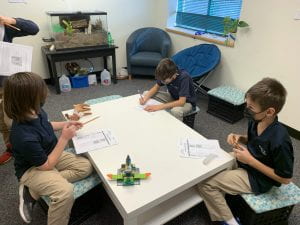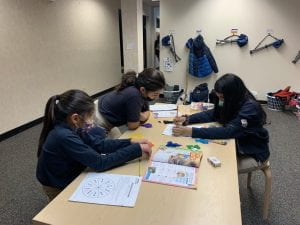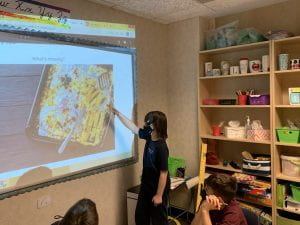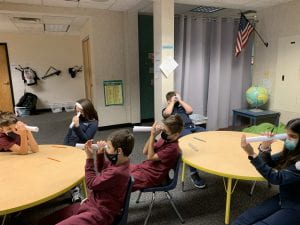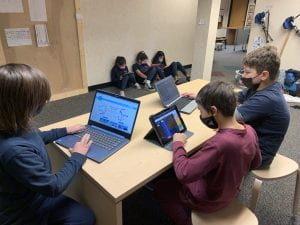Hello everyone,
This week, we continued our deep dive into the coordinate plane. To help us feel confident graphing points on the grid, we played a game of Coordinate Battleship! The students secretly placed geometric shapes on their coordinate planes, then their partner had to use ordered pairs to try and figure out where each shape was located. The students had so much fun developing strategies to try and find each others’ shapes!
We also expanded our understanding of how the coordinate plane can be used by introducing all four quadrants. The students were shown a graph for different modes of transportation based on how fast, slow, fun, or not fun each option was. The students noticed that each end of the graph represented opposites. We noticed where each item was located on the graph, which struck disagreements with the students. Some believed that certain modes of transportation belonged in different areas of the graph based on how fun we believe they are. We took time to explore where different people would want these modes of transportation to be on the graph. For example, some people believed the sail boat should be on the fun section of the graph, while others strongly disagreed. Then, the students broke up into groups to create their own four quadrant graphs. Students chose to look at animals, video games, and technology and find ways to organize them on their graph. It was a great way for students to see the relationships that placement on this type of graph can convey. Once our graphs were finished, the students analyzed graphs from different groups to offer feedback and whether or not they agreed with where items were placed. In the end, we all agreed that four quadrant graphs can be helpful in showing information, such as opposites, in ways that a single quadrant graph can’t.


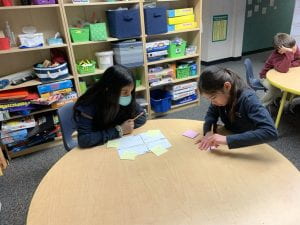
For our Multiplicity Lab challenge, the students were shown an image of a 3D structure made from unifix cubes and were asked to determine how many cubes there were. Since not all of the cubes were visible, the students needed to do some problem solving. Even though each group got the same answer of 33, they visually broke up the same figure in different ways, approaching the problem with unique strategies. Some students even created 3D models to demonstrate their reasoning. Since part of the structure was a cube, the students were also able to apply what they had learned about exponents in their problem solving. Once we had heard each strategy, we were able to use them to create a general formula to use when finding the volume of any shape: length times width times height. The students then had the opportunity to build their own shapes with a volume of 33. We saw incredibly unique shapes, even though they all had the same volume. Once they finished, some students even designed shapes with as many cubes as they liked, then had a different member of their group determine the volume.


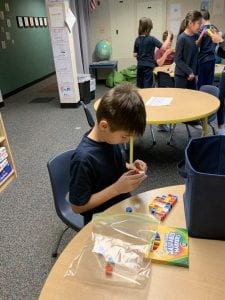

We also spent time this week finishing up our boats. The students have filled them with such interesting artifacts that they would need in the afterlife. They had so much fun building these boats and it really shows in their final products! We will be using these boats for an exciting writing project next week!
We also took a virtual field trip to Egypt! The students analyzed video footage taken with 360 degree cameras of famous Egyptian sites. Groups picked one to focus on, looking at the details all around them. They noticed hieroglyphics, statues, decorations, and the dessert landscape. The students had so much fun exploring these ancient sites!
We’ve kept working on our persuasive essays as well. The students are continuing to do research to help support their view on Plato’s new mask optional policy. It’s been great practice for us in interpreting data and finding accurate information from reputable sites. We also have used it as an opportunity to talk about transitions in writing. Together, the class looked at a sample essay and were given a list of common transition words. As a group, we decided where transitions were needed, and which ones were most appropriate for various parts of the essay. As students begin writing, they are incorporating transitions throughout their pieces.
This week we have also begun preparing for spring conferences. The students have been looking through their work to find pieces they are proud of, as well as pieces they found challenging. The class has been reflecting on the purpose of each assignment, why they are proud of certain items, and what goals they feel are most appropriate for them. The students are excited to show off all the progress they have made since November!


Have a great weekend!



